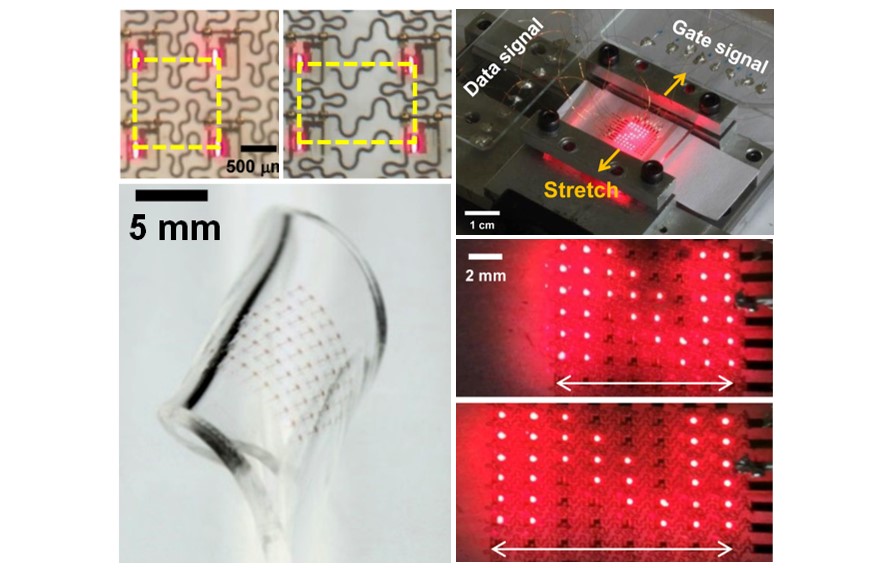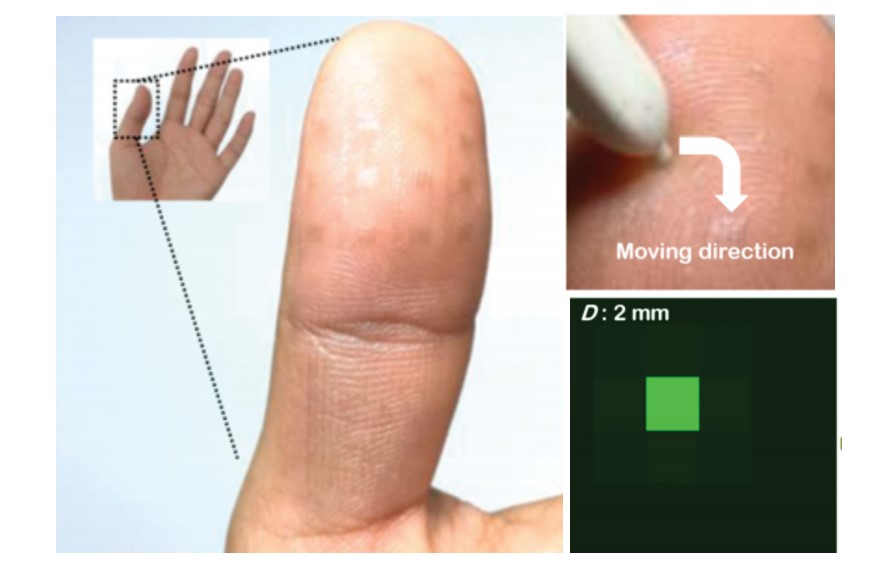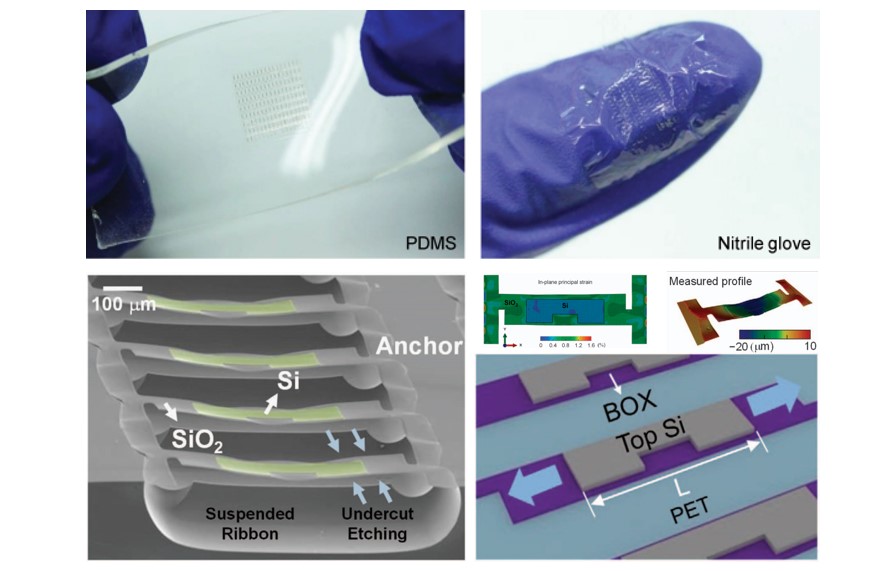Flexible Electronic
Device Laboratory
The aim of our research group is to develop the high performance flexible and stretchable electronic systems using unusual classes of inorganic semiconductor materials in forms of nanoscale ribbons, nanomembrane, micro/nano-wires and one atomic layer film.
Currently, we are exploring integration methods including dry transfer techniques for patterning nanomaterials onto flexible substrates and ultra thin devices for the stretchable and conformal electronics.
Additionally, the strained engineered electronics would produce the ultra high performance for flexible devices.
Our future picture is interesting opportunities for transparent and stretchable displays and sensitive electronic skins.









